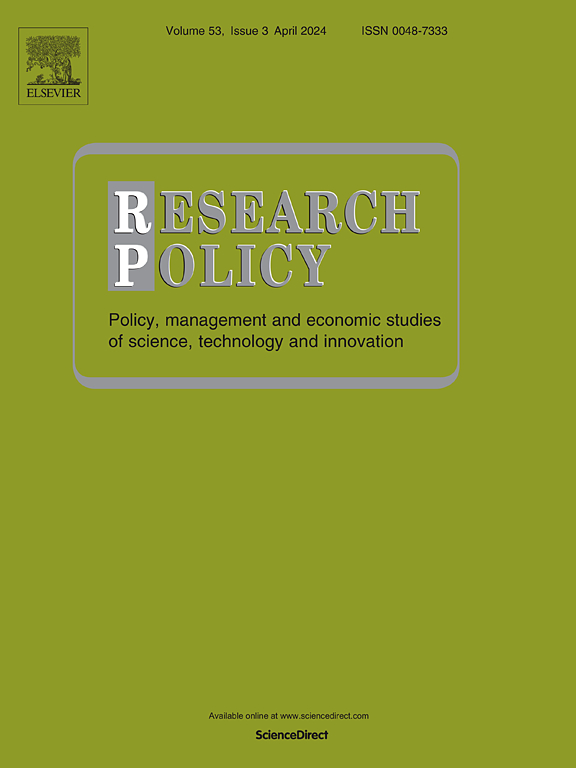技术追赶:中国制造业的新措施和基于专利的证据
IF 8
1区 管理学
Q1 MANAGEMENT
引用次数: 0
摘要
技术追赶文献尚未系统地评估来自后发经济体的不同行业在追赶中取得了怎样的进展。一个重大挑战是缺乏跨国家、行业和时间的创新能力的可靠衡量标准。本文提出了一种新的衡量创新能力的方法——质量加权揭示性创新优势(QRIA),通过同时解决专利数量失真和专利质量异质性的问题,该方法比现有的衡量创新能力的方法更全面、更可靠。通过使用1983年至2017年美国专利商标局(USPTO)授予的所有发明专利的数据,我们应用QRIA来评估具有全球竞争力的中国制造业(N = 22)在创新能力方面的表现。以中国为实证背景,我们的研究首次在全球范围内提供了不同国家和行业间技术追赶的比较证据。我们的分析表明,虽然中国制造业的专利数量显著增长,但与全球制造业相比,其创新能力存在显著差异和时变变化。只有两个行业缩小了与全球领先者的差距:(1)计算机、电子和光学产品制造业;(2)电气设备制造业。其他行业要么进一步落后于全球领先企业,要么保持接近平均水平的创新能力。本文章由计算机程序翻译,如有差异,请以英文原文为准。
Technological catch-up: A new measure and patent-based evidence from China's manufacturing industries
The technological catch-up literature has not yet systematically assessed how different industries from latecomer economies have progressed in catching up. A significant challenge is the lack of reliable measures of innovation capability across countries, industries, and time. In this study, we develop a new measure of innovation capability called quality-weighted revealed innovation advantage (QRIA), which captures innovation capability more comprehensively and reliably than extant measures by simultaneously addressing issues of patent quantity distortion and patent quality heterogeneity. We apply QRIA to evaluate how globally competitive Chinese manufacturing industries (N = 22) have become in terms of innovation capability by using data from all invention patents granted by the US Patent and Trademark Office (USPTO) between 1983 and 2017. Using China as the empirical context, our study provides the first worldwide comparative evidence of technological catch-up across countries and industries over time. Our analyses reveal that while Chinese manufacturing industries have seen significant growth in patents, there are notable differences and time-varying changes in their innovation capabilities compared to their global counterparts. Only two industries have narrowed their gaps with global leaders: (1) computer, electronic, and optical products manufacturing and (2) electrical equipment manufacturing. The other industries have either fallen further behind global leaders or remained close to the average innovation capability.
求助全文
通过发布文献求助,成功后即可免费获取论文全文。
去求助
来源期刊

Research Policy
MANAGEMENT-
CiteScore
12.80
自引率
6.90%
发文量
182
期刊介绍:
Research Policy (RP) articles explore the interaction between innovation, technology, or research, and economic, social, political, and organizational processes, both empirically and theoretically. All RP papers are expected to provide insights with implications for policy or management.
Research Policy (RP) is a multidisciplinary journal focused on analyzing, understanding, and effectively addressing the challenges posed by innovation, technology, R&D, and science. This includes activities related to knowledge creation, diffusion, acquisition, and exploitation in the form of new or improved products, processes, or services, across economic, policy, management, organizational, and environmental dimensions.
 求助内容:
求助内容: 应助结果提醒方式:
应助结果提醒方式:


